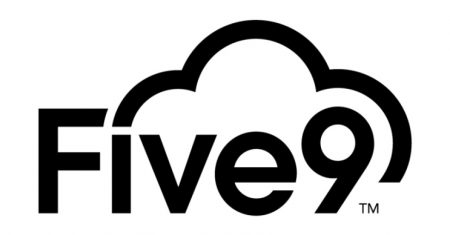Don’t put your customers (and business) on hold – Brian Atkinson, GM and VP EMEA, Five9
All too often, brands struggle to provide a seamless customer experience. Everyone’s familiar with being put on hold – but with UK customers facing waits over an hour, with average times of up to 20 minutes, it’s clear things need to change.
This is compounded by the pandemic and its continued disruption on business operations. Customer demand is changing, fuelled by remote working, pressures on the bottom line and the need to restructure operations. Without the right support in place, businesses could fall at the first hurdle, at a time when every customer counts. And with more people turning to social media, brands aren’t far away from a poor customer experience going viral.
On the flipside, getting customer service right can do wonders for a business. An exceptional experience can lead to higher customer satisfaction, improved loyalty, increased spending, and a greater willingness to recommend a brand, among other positive metrics. Recent research into customer loyalty shows that consumers who reported a “very good” customer experience are 54% more likely to buy from a company than those who gave their customer experience a “very poor” rating.
So, what can organisations do to step up their customer service game and stay ahead of customers’ varying needs following the pandemic? The answer lies in creating a frictionless communications experience through technology, people and processes.
Hold no longer
Making customers wait in queues to speak with a service representative undoubtedly puts brands in a vulnerable position, causing much frustration and impacting short-term returns. Studies show that long wait times can also have a negative impact on long-term brand loyalty, causing 33% of customers to consider switching their loyalty to a competitor.
It might be tempting to do away with phone lines all together, given the many other service channels available and the fact many agents are working from home nowadays. However, a huge number of customers still prefer to receive support over the phone because they value the more personal connection it provides. In fact, of the top five preferred channels for issue resolution, Gartner found that 44% of customers choose phone over chat (17%), email (15%), company website (12%), and search engine (4%).
With much value to be derived from the traditional phone call, businesses must have strategies in place to provide customers with the best possible experience, even when faced with the challenges of communication in the pandemic. Making customers wait on hold simply isn’t an option for businesses anymore. To drive higher sales, earnings and returns, it’s paramount to provide superior service when and how customers expect it.
Frictionless communications
At a time when customers’ needs are constantly shifting, it’s never been more important for organisations to offers up effective solutions to queries as quickly as possible. This can make all the difference when it comes to establishing trust and long-term loyalty.
Automation goes a significant way to help, answering routine inquiries and subsequently allowing companies to deflect “busy work” calls from live agents, freeing up their time to focus on complex issues and hard-to-solve questions. But the average contact centre agent’s knowledge only extends so far, and the more complicated the issue or tougher the question, the more likely the agent is to require assistance from within the business.
This can prove frustrating for agents forced to toggle between the contact centre and unified communications (UC) platforms, blindly trying to find an available subject matter expert who can help resolve the customer’s problem. Worse yet is when an agent can’t resolve the issue on first contact because they can’t reach a qualified expert.
To best serve customers, contact centre agents should be able to place a quick voice call, for example, to someone within the business who can provide the information they need to address the issue at hand, in a flash. An intelligent omnichannel routing can break down the walls separating the two. Pre-built UC integrations can improve first contact resolution by giving agents the ability to easily access subject matter experts, allowing agents to connect to them during customer engagements and bring them directly into a conversation if needed.
Forward-looking companies have already begun integrating UC, CRM, and contact centres, enabling seamless communications between agents and subject matter experts within the business, making information available at their fingertips. They are gaining a competitive advantage with improved customer experiences, all while lowering costs when it’s needed the most.
Delivering a more human experience
The COVID-19 crisis has shown the importance of empathy and human connection between brands and customers. Messages of comfort and positive support have assured consumers, as well as employees, that they are cared for during so much uncertainty.
How brands move forward will be based on what they learned through this experience, and those that understand how to get close to their customers will be able to respond agilely to their needs.
An effective way to achieve this is to architect the contact centre to intentionally be more human in how it listens, engages, responds, and proactively meets customers where they are every time they connect. The cloud provides an effective platform to do this, maximising responsiveness from businesses at any point in time, regardless of location. Not only does it provide easy work-from-home setups, it also provides omnichannel options, scalable staffing, intelligent routing, easily accessible data and AI-assisted capacities. Through this, businesses can continue to provide a high level of customer service even when adverse events occur.
A business priority
Customer experience is crucial to the long-term success of every business, a vital avenue for increasing loyalty, brand recognition and spend. Never has this been truer than now. As the COVID-19 crisis continues to cause business disruption, customers need exceptional service more than ever before – support which can provide solutions quickly and effectively. There’s no room to be put on hold anymore. Fortunately, technology is on hand to help remove roadblocks and deliver a seamless experience across different channels, all while delivering a more human connection.

Brian Atkinson joined Five9 in 2019 as the GM/VP EMEA, where he is responsible for the growth and strategy in the EMEA region.
Before joining Five9, Brian led the Global Mid-Market Calling at Cisco. Prior to this, he was responsible for Cisco’s Collaboration sales and launched Cisco’s Customer Care business in UK & Ireland and for taking Digital Media Solutions to market in Europe. Brian spent 8 years in Cisco Sales for IP Telephony and Contact Centre sales in US markets.
Brian Atkinson has a Bachelor of Science in Computer Engineering from Wichita State University in the US.

For additional information on Five9 visit their Website





